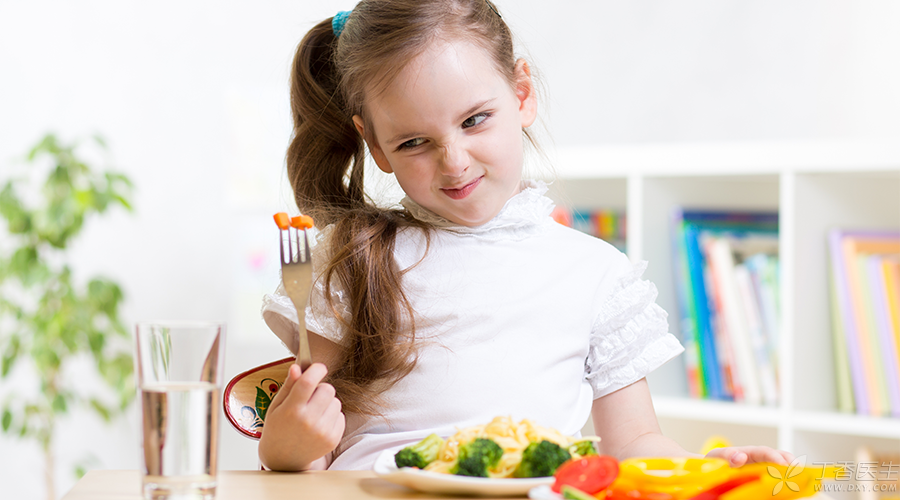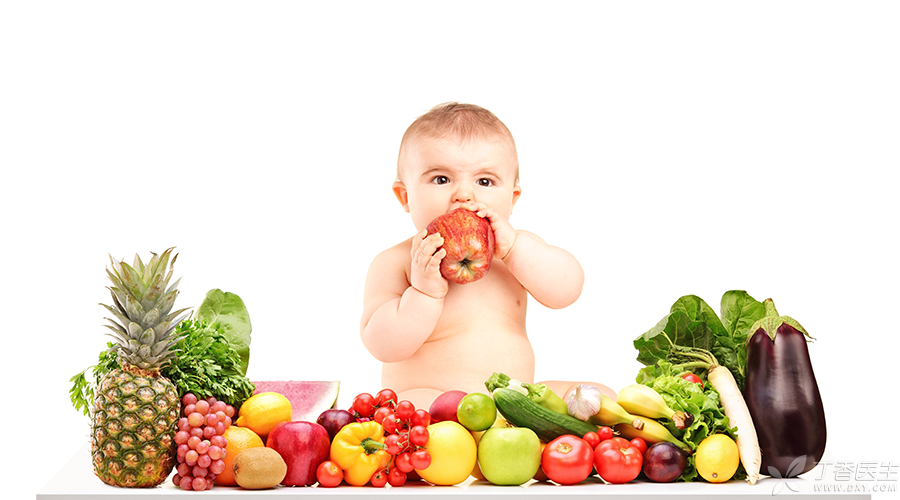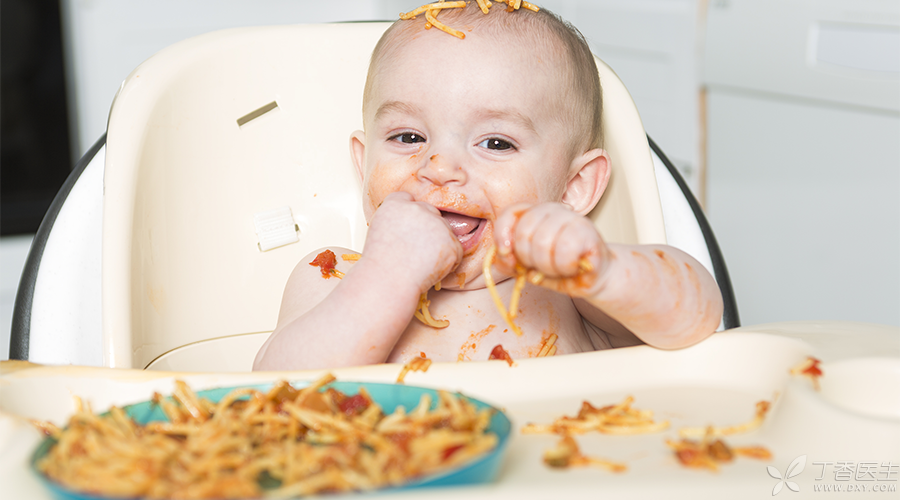
The climate in autumn is changeable. Rainy weather often falls in early autumn. In mid-autumn, the temperature will pick up again. The so-called autumn is brisk. In late autumn, the temperature will drop sharply under the influence of cold air from the north.
Therefore, the climate throughout the autumn is characterized by changeable cold and warm, alternating sunny and rainy weather. Another feature throughout the autumn is [dry].
Characteristics of Baby’s Body Changes
Autumn dryness is objectively felt by the human body, usually manifested as respiratory tract dryness, skin dryness and digestive tract dryness. The corresponding symptoms are dry mouth and throat, nasal mucosa congestion, skin dryness causing various skin discomfort symptoms, constipation, etc.
However, the changeable temperature and humidity in autumn can easily make people with low resistance sick, especially among children.
Children’s Diet Principles in Autumn
No matter the what season, the first balanced diet is still the most important, but some adjustments can be made according to the stimulation brought by the transition of temperature difference in different seasons and the seasonal characteristics of autumn [dry].
Step 1 Replenish more water
Drink more warm boiled water, refuse ice water and cold water, and drink a small amount frequently. Ice water and cold water are lower than human body temperature, which is easy to cause discomfort caused by temperature difference stimulation in gastrointestinal tract, especially for children with more fragile gastrointestinal environment.
2. Adequate intake of fresh vegetables and fruits
In particular, green leafy vegetables have sufficient water content and are rich in water-soluble vitamins and dietary fiber, which is very helpful for maintaining water content in the body and preventing constipation. (It is recommended to take 300 ~ 500g of vegetables every day)
3. Pay Special Attention to Food Hygiene
Autumn is the season of high incidence of rotavirus. In addition to ensuring the freshness of food materials, it is necessary to thoroughly cook them during processing. Food that cannot be eaten completely should be thoroughly heated before being put into the refrigerator, and the refrigerator should be disinfected and cleaned regularly. (Click here to see < < These foods, really don’t put in the refrigerator > >)
Food suitable for children in autumn

1. Staple food
The staple food can be coarse cereal porridge (millet, brown rice, oat rice, etc.), lily porridge, tremella porridge, steamed yam, boiled taro, pumpkin soup and steamed purple potato as some staple food instead of white rice.
Coarse cereals and various potatoes are good sources of B vitamins, which can effectively keep skin lubricated and prevent stomatitis.
2. Vegetables
White radish, carrot, cauliflower, broccoli, spinach, tomato, kale, cabbage, celery.
These vegetables are rich in dietary fiber, vitamin A, vitamin C, etc., which help to maintain water in the body and normal defecation.
Step 3: Meat dishes
River shrimp, shrimp, all kinds of freshwater fish, chicken, duck, pigeon, lean pork, corbel meat, tofu and bean products.
Autumn meat dishes should choose [low-fat and high-quality protein as the main], reduce or not eat parts with high animal fat content, such as pork belly, mutton, etc. Cooking should try to reduce cooking oil, mainly stewed, simmered soup and steamed. Ensure the intake of bean products 2-3 times a week.
Step 4: Fruit
Pear, Apple, Banana, Lemon, Orange, Pomelo, Pomegranate, Jujube, Kiwi Fruit, Pitaya, Siraitia grosvenorii.
Most children like to eat fruits, but the amount given every day should be controlled, especially fruits with high sugar content such as bananas, dates and grapes. Eating more not only affects the appetite of meals, but also easily causes obesity.
Other foods suitable for eating in autumn include milk, mushroom, kelp and lily. Of course, the last and most important one is water, which should ensure that children have enough water intake every day.
Which foods should not be eaten more

STEP 1 Eat less irritating food
For example, prickly ash, star anise, fennel and other ingredients.
Most of this kind of food is irritating, and the cooking method is mostly heavy oil and sugar, which is not conducive to health. Especially for babies who are too young, they should avoid eating it so as not to increase the stimulation to the digestive tract.
2. Eat less greasy fried food
Such as fried chicken, barbecue, etc.
These foods are too greasy and difficult to digest. Children’s gastrointestinal function is weak, which is especially easy to cause gastrointestinal discomfort and diarrhea.
3. Eat less high-fat and high-sugar foods
This kind of food is very greasy, mostly refined sugar food, which is usually very popular with children.
Such as potato chips, cakes, desserts, etc.
The nutritional density of this kind of food is usually very low, which is composed of saturated fat and carbohydrate. Eating more affects the amount of food eaten. Long-term consumption will easily lead to obesity and affect the normal absorption and utilization of nutrients.
Step 4 Avoid cold food
For example, cold dishes, Japanese sashimi, etc.
Cold dishes should be thoroughly scalded and then cold mixed. Do not eat raw. All kinds of sashimi in daily ingredients are not suitable for children to eat and are prone to diarrhea after eating. The food taken out of the refrigerator must be thoroughly heated to boiling before eating.
Cough, diarrhea, constipation when how to eat
1. Diarrhoea
- Pay attention to light and digestible food, With porridge, paste noodles and other foods as the onset period, Ensure the heat supply as much as possible. When the baby’s mouth is tasteless, Some cooked apples can be properly ingested. Once the defecation characteristics are restored, the normal diet can be gradually restored. Pay attention to supplementing liquid to prevent dehydration. During diarrhea, oral rehydration salts are needed and zinc is supplemented. Parents can also buy probiotics to supplement their children, which is helpful to quickly restore the normal intestinal environment.
If children are taking antibiotics at the same time, probiotics cannot be taken at the same time. It is recommended to take them after 2 hours.
2. Constipation
Too little dietary fiber intake, insufficient oil intake, insufficient exercise and failure to develop good defecation habits will all cause constipation.
- Increase the intake of some dietary fiber, increase intestinal peristalsis. For example, some multi-seed and berry fruits such as kiwi fruit, pitaya, strawberries, blueberries, etc. Use some coarse cereals with crude fiber instead of some staple foods, such as sweet potatoes, corn, miscellaneous beans, etc. Prepare some nuts for children as snacks for children.
On the one hand, preparing nuts can supplement energy; On the other hand, nuts contain a large amount of unsaturated fatty acids, which is helpful for children’s brain development, while nuts contain rich oils and fats that can moisten bowels and relieve constipation.
Note: Bananas and honey have limited effects on constipation. Do not eat more to relieve constipation.
Step 3: Cough
Cough is a process in which the human body actively discharges foreign bodies, viruses and bacteria.
- Diet should be light, moist, easy to digest soft food, semi-liquid and liquid to children’s diet. Avoid spicy stimulating condiments and food. Ensure the amount of drinking water can also relieve the discomfort caused by inflammation, but should not drink fruit juice or other high-sugar beverages. Pay attention to keep indoor appropriate temperature and humidity, reasonable arrangement of three meals.
Porridge, noodles, pumpkin puree, sweet potato puree, egg custard, tremella custard, etc. are recommended in food.
Cold, asthma, bronchiolitis, flu or pneumonia can cause cough (and cough does not cause pneumonia). However, no matter what the cause is, it is helpful to take in more liquid and drink more water.
